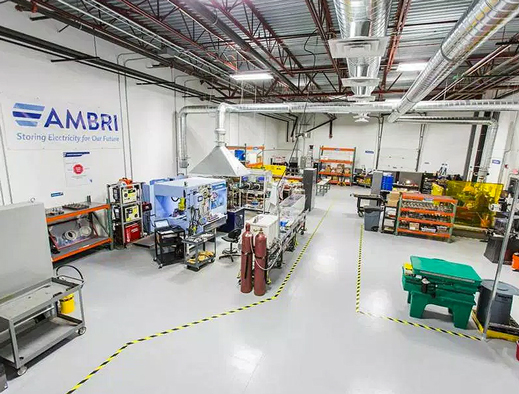Race for a New Grid Battery Hits a Speed Bump
One of the most promising startups working on new types of grid-scale batteries, Ambri, has revealed disappointing test results for its novel technology, forcing it to lay off one-quarter of its staff in Cambridge, Massachusetts, and push back commercial deployment indefinitely.

The problem, according to CEO Phil Giudice, is the seals that keep Ambri’s liquid electrodes enclosed. Ambri’s liquid-metal batteries are housed inside steel cans that must be hermetically sealed with materials that hold up for many years. Founded in 2011, the company has been working for the last couple of years on the sealant issue, and by early 2015 researchers were confident they’d come up with a solution. Testing over the summer, however, indicated that the seals had failed to achieve the required levels of performance. Now, says Giudice, it’s back to the lab.
“We’re looking at a Plan B and a Plan C solution,” says Giudice, “and we’re confident that they will perform really well. It looks promising.”
Ambri is one of a clutch of startups working to develop advanced batteries that will succeed lithium-ion batteries—particularly for storing energy from intermittent renewable sources, such as wind and solar (see “Ambri Funding Influx Suggests a New Day for Grid Batteries”), and integrating it into the grid. While lithium-ion batteries have advanced rapidly in terms of both operational life and price in recent years, they are still not cheap or long-lasting enough to provide grid storage on a wide scale. Investors have backed several novel battery chemistries that could fill that role, including flow batteries, solid lithium polymers, and aqueous-ion materials. Although companies such as Ambri, Aquion, and Seeo are getting close, so far none have succeeded in commercializing a new battery.
Based on technology originally developed at MIT by materials scientist Donald Sadoway and his student David Bradwell, now Ambri’s CTO, Ambri’s system uses two liquid metals as electrodes, separated by a liquid-salt electrolyte (see “Ambri’s Better Grid Battery”). Backed by Bill Gates, Khosla Ventures, and French oil major Total, among others, Ambri had planned to ramp up production and begin delivering prototypes by late 2015 or early 2016. Now that time line has been pushed back, underlining the challenge of producing an exotic battery technology at the scale required. Giudice says the company has money in hand for at least two years, and it hopes to deliver products well within that time frame. But it “depends on getting the seals working the way we need them to,” he says.
One other challenge the novel battery makers face is that lithium-ion batteries, which have more or less taken over the market for electric vehicles and for residential energy storage, continue to go up in performance and down in price. Prices have dropped by half in the last few years, and a new report from Moody’s Investor Service concludes that “commercial and industrial use of lithium-ion batteries for energy storage could become economically viable in the next three to five years if the decline in battery prices persists.”
But Giudice is undaunted. Just as lithium-ion batteries expanded the market for energy storage and supplanted lead-acid and sodium-sulfur batteries, “our technology will expand the market even further,” he says. “And it will be nicely positioned against even the improved lithium-ion batteries that are out there right now.”
Keep Reading
Most Popular
Large language models can do jaw-dropping things. But nobody knows exactly why.
And that's a problem. Figuring it out is one of the biggest scientific puzzles of our time and a crucial step towards controlling more powerful future models.
The problem with plug-in hybrids? Their drivers.
Plug-in hybrids are often sold as a transition to EVs, but new data from Europe shows we’re still underestimating the emissions they produce.
Google DeepMind’s new generative model makes Super Mario–like games from scratch
Genie learns how to control games by watching hours and hours of video. It could help train next-gen robots too.
How scientists traced a mysterious covid case back to six toilets
When wastewater surveillance turns into a hunt for a single infected individual, the ethics get tricky.
Stay connected
Get the latest updates from
MIT Technology Review
Discover special offers, top stories, upcoming events, and more.